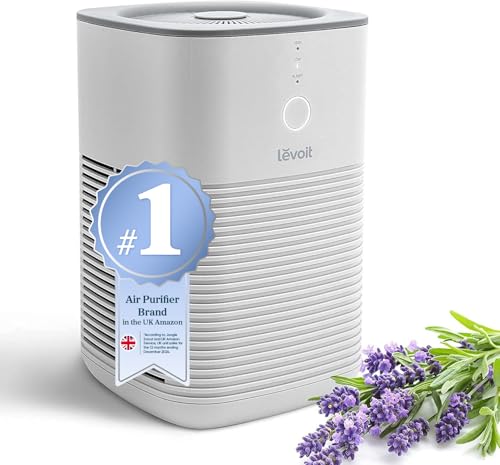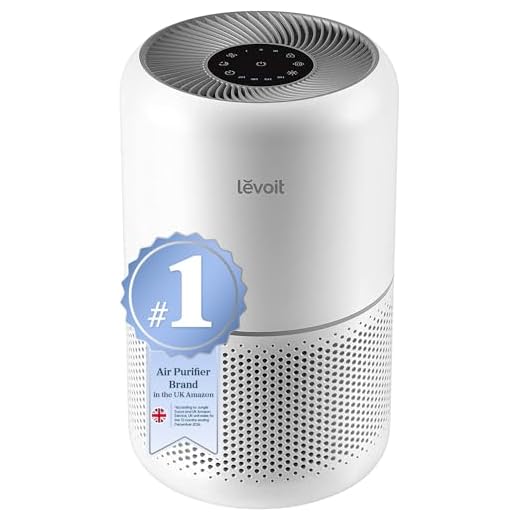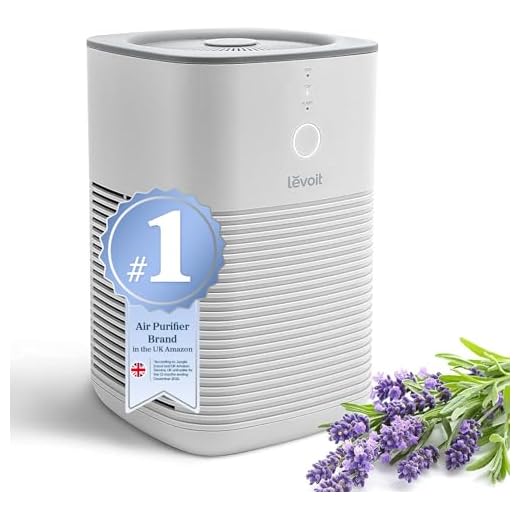




For those with allergies or asthma, it’s essential to maintain a clean environment. Regularly grooming your four-legged friend can significantly reduce allergens in your home. Consider using a high-quality vacuum equipped with a HEPA filter to capture fine particles that may be airborne.
It’s also advisable to establish pet-free zones, especially in bedrooms. This simple step can create a sanctuary for individuals sensitive to allergens, allowing for better rest and reduced irritation. Using air purifiers with HEPA filters can further improve indoor air quality by trapping tiny particles, including dander.
Incorporating frequent cleaning routines, such as washing bedding and curtains, can help minimise the accumulation of allergens. Opt for washable items whenever possible to ensure they remain clean and free of irritants. Keeping surfaces dust-free through regular dusting can also diminish the chances of discomfort for sensitive individuals.
Lastly, consulting with a healthcare professional about managing allergies can provide personalised strategies. Exploring options like antihistamines or allergy shots may be beneficial for those who experience significant discomfort. Remember, proactive measures can make a notable difference in maintaining a comfortable home environment with your beloved pet.
Effects of Canine Fur on Air Quality and Health
Individuals with sensitivities should consider minimising exposure to fur particles. Regular cleaning routines can significantly improve indoor air quality. Here are some practical steps:
- Vacuum frequently with a HEPA filter vacuum cleaner to capture fine particles.
- Use air purifiers equipped with HEPA filters in common areas.
- Groom pets outdoors to reduce indoor shedding.
- Wash bedding and soft furnishings regularly to remove accumulated allergens.
Monitoring Symptoms and Environment
It’s advisable to keep track of any physical reactions experienced in shared spaces. Documenting symptoms can help identify triggers. Consider these observations:
- Note timings of symptoms in relation to pet interactions.
- Assess the condition of indoor air – humidity levels can exacerbate issues.
- Consult with a healthcare professional for personalised advice and management strategies.
Building a Healthier Living Space
Creating a comfortable atmosphere for all inhabitants is essential. Implement these strategies:
- Designate pet-free zones, especially in sleeping areas.
- Invest in washable pet bedding and blankets.
- Consider hypoallergenic pet options if sensitivities are severe.
By taking proactive measures, it’s possible to mitigate the impact of fur on health and enhance overall comfort in the home. Regular maintenance and awareness can lead to a more pleasant living environment for everyone.
Understanding Allergens in Canine Fur
Regular grooming helps minimise allergens present in your pet’s fur. Brush your canine friend frequently to remove loose strands and dander, which are common triggers for many individuals. A vacuum with a HEPA filter can effectively capture these particles from your home environment.
Types of Allergens
Proteins found in saliva, urine, and skin cells are the main culprits behind allergic reactions. During grooming or playtime, these proteins can become airborne, leading to discomfort for sensitive individuals. Identifying and understanding these allergens are crucial for managing reactions.
Household Tips
Implementing simple strategies can significantly reduce allergen levels. Regular washing of bedding, curtains, and any fabric your pet frequents is beneficial. An air purifier with a HEPA filter can also help clear the air of allergens. Limiting access to certain areas, like bedrooms, might provide additional relief for those sensitive to allergens.
Consistency in cleaning routines and grooming practices is key in managing exposure effectively. By following these steps, creating a comfortable living space for both you and your furry companion is achievable.
How Dog Hair Affects Allergic Individuals
Individuals with sensitivities may experience heightened reactions due to exposure. It’s crucial to maintain a clean environment to minimise irritants. Regular grooming and vacuuming can significantly reduce allergens in living spaces.
One effective method is to establish a cleaning routine. Aim for at least twice-weekly vacuuming, focusing on areas where pets frequently roam. Utilising a vacuum equipped with a HEPA filter can capture microscopic particles that regular vacuums may miss.
Additionally, consider implementing air purifiers with HEPA filters in commonly used rooms. This can enhance air quality by filtering out allergens. Keeping windows closed during high pollen seasons can further protect against external allergens mixing with dander.
Incorporating specific cleaning products designed for allergy sufferers can also be beneficial. Opt for solutions that are free from harsh chemicals to avoid further irritation. Regularly washing pet bedding and toys in hot water will help remove settled allergens.
It’s also advisable to designate certain areas in the home as pet-free zones. This can provide a safe haven for those with sensitivities, reducing the likelihood of exposure. Establishing boundaries and consistently enforcing them can be a simple yet effective strategy.
| Recommendations | Frequency |
|---|---|
| Vacuuming | Twice a week |
| Washing bedding and toys | Weekly |
| Using air purifiers | Ongoing |
| Designating pet-free zones | Constantly |
By implementing these strategies, individuals can significantly alleviate discomfort and improve their quality of life while cohabiting with furry companions.
Symptoms of Respiratory Issues from Dog Hair Exposure
Individuals who are sensitive to allergens may experience various symptoms upon exposure to pet fur. Recognising these signs early can help manage discomfort effectively.
Common Symptoms
- Persistent sneezing
- Runny or stuffy nose
- Itchy, watery eyes
- Coughing or wheezing
- Shortness of breath
Severe Reactions
In more serious cases, exposure can lead to:
- Chest tightness
- Severe asthma attacks
- Difficulty in breathing
Monitoring these symptoms is crucial, especially in environments where you might frequently encounter these allergens. It’s advisable to consult a healthcare professional if you notice persistent issues. Additionally, maintaining a clean living space can help reduce allergen exposure. For those looking to balance meal preparation and pet care, consider checking out this guide on how to cook chicken thighs in a electric skillet to simplify your cooking process while keeping your home comfortable.
Preventative Measures for Dog Owners
Regular grooming is essential. Brushing your furry friend at least once a week significantly reduces the amount of loose fur and dander in your home. I’ve found that using a high-quality brush designed for my dog’s coat type makes a noticeable difference.
Invest in air purifiers equipped with HEPA filters. These devices effectively capture allergens and improve indoor air quality. I placed one in the living room and noticed a substantial reduction in sneezing episodes during playtime.
Cleaning Routines
Establish a strict cleaning schedule. Vacuum carpets and upholstery frequently, ideally using a vacuum with a HEPA filter. I dedicate my Sundays to this task, and it has drastically lowered allergen levels in my living space. Don’t forget to wash your pet’s bedding and toys regularly to minimise build-up.
Creating Safe Zones
Designate specific areas in your home as pet-free zones. Keeping the bedroom off-limits has helped me maintain a cleaner sleeping environment. Use door mats at entrances to reduce the amount of outdoor allergens that might be brought inside. I’ve noticed my guests appreciate the extra attention to cleanliness as well.
Cleaning Techniques to Reduce Dog Hair in Homes
Utilise a high-quality vacuum cleaner equipped with a HEPA filter, specifically designed to capture allergens and fine particles. Regularly schedule vacuuming sessions, ideally two to three times a week, to keep surfaces clear. Focus on areas where pets spend the most time, such as carpets, rugs, and upholstery.
Incorporate lint rollers as a quick solution for removing stray strands from clothing and furniture. Keep one in your car for those spontaneous adventures. For a deeper clean, consider using a rubber glove technique: dampen your hand and wipe surfaces to gather loose fur effortlessly.
Wash bedding, blankets, and any fabric items your pet frequents weekly. Use hot water to effectively eliminate allergens and dander. Don’t forget to clean your pet’s toys and grooming tools to minimise the spread of these particles throughout your space.
Implement air purification systems with HEPA filters to improve indoor air quality. These devices trap airborne allergens, reducing the risk of irritation for sensitive individuals. Additionally, consider using an air humidifier to maintain optimal moisture levels, as dry air can worsen symptoms.
Regular grooming is key. Brush your pet outside or in a designated space to contain shedding. A quality brush suited for your pet’s coat type can significantly reduce the amount of fur that ends up in your home. For extra care, explore the best foods to bulk up dog to ensure your pet’s coat remains healthy and less prone to excessive shedding.
Establish a no-pet zone in your home, such as bedrooms or home offices, to create allergen-free spaces. Communicate this rule with family members and guests to ensure consistency. Finally, consider investing in washable covers for furniture to keep them clean and fur-free.
Consulting Healthcare Professionals for Respiratory Concerns
Seeking advice from healthcare experts is crucial if you notice any difficulties with breathing or other related symptoms. It’s advisable to arrange an appointment with an allergist or a pulmonologist who can provide tailored guidance based on individual health profiles. These specialists can conduct tests to identify specific sensitivities and recommend appropriate treatments.
Understanding the Importance of Accurate Diagnosis
Obtaining a precise diagnosis is essential. Healthcare professionals may suggest skin prick tests or blood tests to pinpoint allergens. This information helps in creating a management plan, which might include medications, lifestyle adjustments, or environmental modifications to alleviate symptoms. Documenting your symptoms and any patterns you observe can assist your healthcare provider in making informed decisions.
Follow-Up Care and Monitoring
Regular follow-ups with your healthcare provider are important for ongoing management. Adjustments to treatment plans may be necessary based on how well the current strategies are working. Staying proactive and communicating openly about any changes in symptoms ensures that your healthcare team can provide the best possible care.
Additionally, consider discussing potential lifestyle changes or interventions that may help in minimising exposure to irritants. This could include recommendations for air purifiers or changes in home cleaning routines. Remember, a collaborative approach with your healthcare provider can significantly impact your overall well-being.









